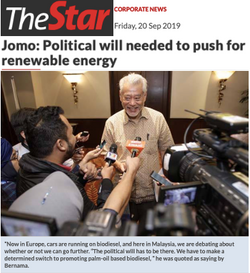- Jun 17
- 4 min read
KUALA LUMPUR, Malaysia, Jun 17 2025 (IPS) - Wars, economic shocks, planetary heating and aid cuts have worsened food crises in recent years, with almost 300 million people now threatened by starvation.
Why hunger?
World food production has increased almost fourfold since 1960. FAO statistics indicate enough output to feed the world’s eight billion plus another three billion!
Clearly, inadequate food due to population growth cannot explain persistent hunger. Yet, the number of hungry people has been rising for more than a decade. So, why are so many hungry if there is more than enough food for all?
The multi-stakeholder 2025 Global Report on Food Crises (GRFC) notes 2024 was the sixth consecutive year of high and growing acute food insecurity, with 295.3 million people starving!
In 2023, 733 million people experienced chronic hunger. Over a fifth (22.6%) of the 53 countries/territories assessed in this year’s GRFC were especially vulnerable.
Food output in 2024 continued to rise. In 2022, the world produced 11 billion metric tonnes of food, including 9.6 billion tonnes of cereal crops, such as maize, rice and wheat.
Most hungry people are poor. The poverty line is supposed to reflect the poor’s ability to afford basic needs, mainly food. But the discrepancy between poverty and hunger trends implies inconsistent data and definitions.
Over 700 million worldwide survive on less than $2.15 daily without enough food. Presumably, the 3.4 billion with less than $5.50 daily can barely afford enough nutrition.
New World Bank data estimates 838 million, 10.5% of the world’s population, were in extreme poverty in 2022, 125 million more than previously estimated. It expects one in ten (9.9%) to be in extreme poverty in 2025, with about 750 million hungry.
The extreme poverty line is now $3/day instead of $2.15/day. The poor comprised almost half (48%) the world’s population in 2022. With bleak medium-term growth prospects and inequality still growing, their prospects look especially dismal.
While dietary or caloric energy is essential for human activity, adequate dietary diversity is crucial for human nutrition. Hence, the poor typically cannot afford to eat enough, let alone healthily.
Women and girls are generally more likely to go hungry than men, with hunger rates in women-headed households usually higher. UN-recognized ‘indigenous peoples’ are under 5% of the world’s population but account for 15% of the extreme poor, suffering more hunger than others.
Why food crises?
The multi-stakeholder 2025 Global Report on Food Crises (GRFC) notes 2024 was the sixth consecutive year of high and growing acute food insecurity, with 295.3 million people starving!
Worsening conflicts, economic crises, deep funding cuts and less humanitarian assistance all threaten food security. As planetary heating worsens, those experiencing acute food insecurity will likely increase again this year.
Food insecurity has worsened in 19 countries/territories, mainly due to internal conflicts, as in Myanmar, Nigeria, and the Democratic Republic of the Congo.
Even before the aid cuts, half the countries/territories featured in GRFC 2025 faced food crises. Despite La Niña rains, droughts in Ethiopia, Kenya, Somalia, Afghanistan and Pakistan are expected to worsen.
USAID and other recent aid cuts have defunded food programmes for over 14 million children in Sudan, Yemen and Haiti alone. G7 countries are expected to cut aid by 28% in 2026 from 2024. Meanwhile, the GRFC 2025 reported humanitarian food assistance “declined by 30 percent in 2023, and again in 2024”!
In 2024, 65.9 million in Asia were food insecure, the worst in the Middle East and North Africa (MENA). Food crises threatened 33.5 million, or 44% of those in the eight MENA territories assessed in GRFC 2025.
Starvation as weapon
The number of starving people more than doubled in 2024! Over 95% of this increase was in the Gaza Strip or Sudan. Wars destroy and disrupt food production and distribution. A famine was declared in Sudan in December 2024, with more than 24 million starving due to the civil war.
Sudan has the largest land area for farming in Africa. Two-thirds of Sudan’s population relies on agriculture, but the ongoing conflict has caused the destruction and abandonment of much farmland and infrastructure.
Despite the Sudanese military’s devastating factional war, the country remains the world’s largest exporter of oily seeds (groundnuts, safflower, sesame, soybean, and sunflower), reflecting its agronomic potential.
Many more are starving in Haiti, Mali, and South Sudan. The UN’s Integrated Food Security Phase Classification (IPC) deems such starvation, death, destitution and severe acute malnutrition “catastrophic”.
Food deprivation has become the primary Israeli weapon against the people of Gaza. Gaza’s 2.1 million Palestinians have been at “critical risk” of famine due to the Israeli blockade on food and humanitarian aid since October 2023!
Despite official Israeli denial of mass starvation, growing international outrage, including from some of its staunchest allies, has forced the Netanyahu government to gloss over its actions. In May, it set up the Gaza Humanitarian Foundation to “calibrate” calorie rations to continue starvation but not to death.
Related IPS Articles
Available online at: Weaponising Food Worsens Starvation




















